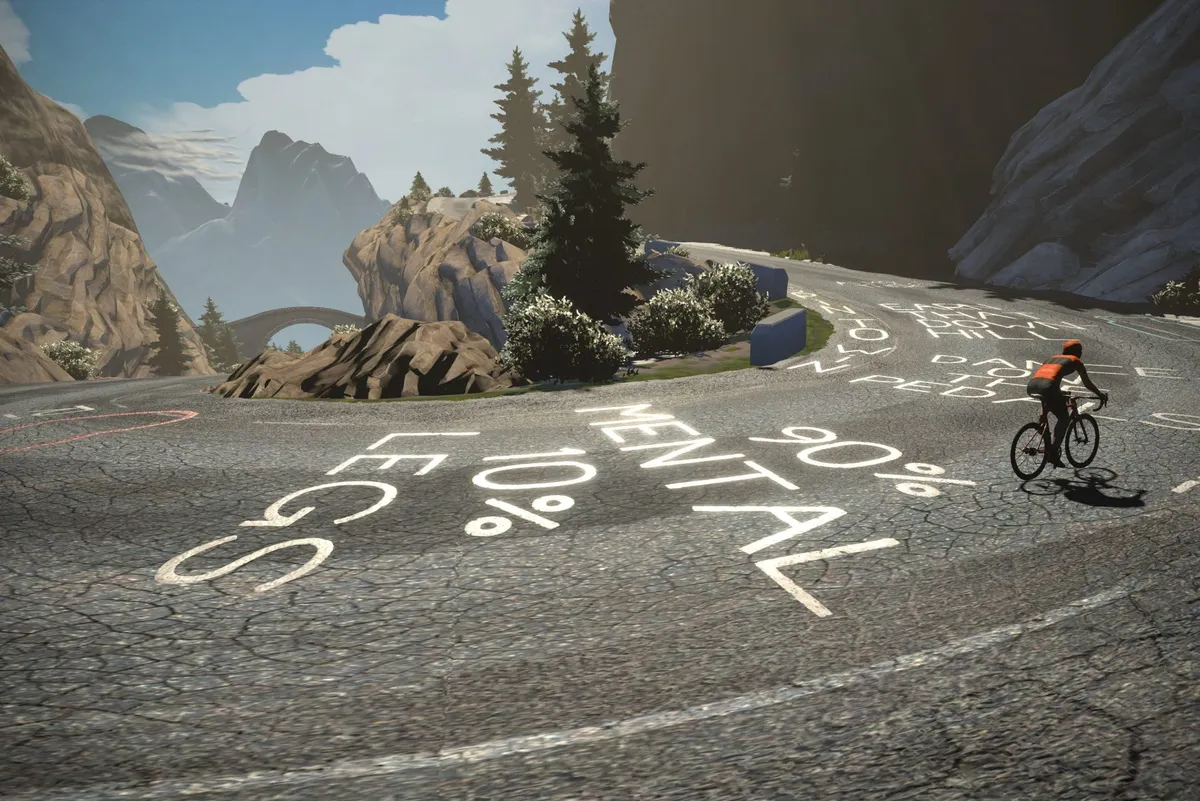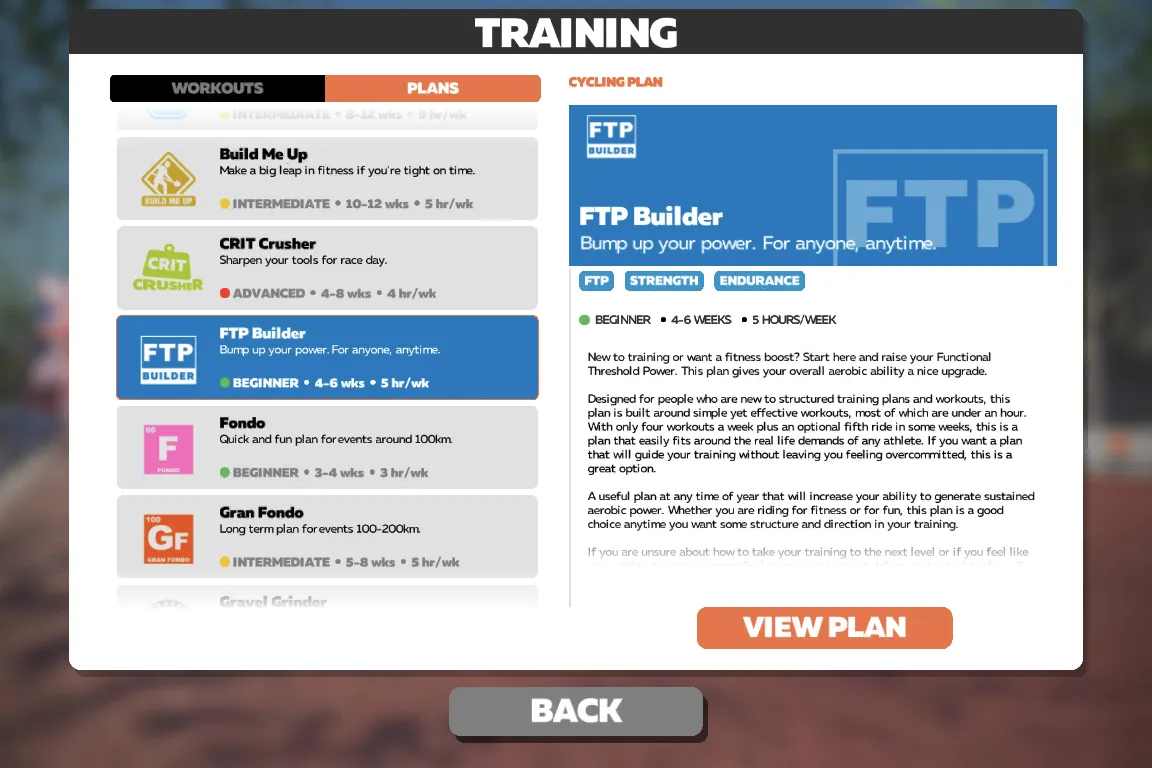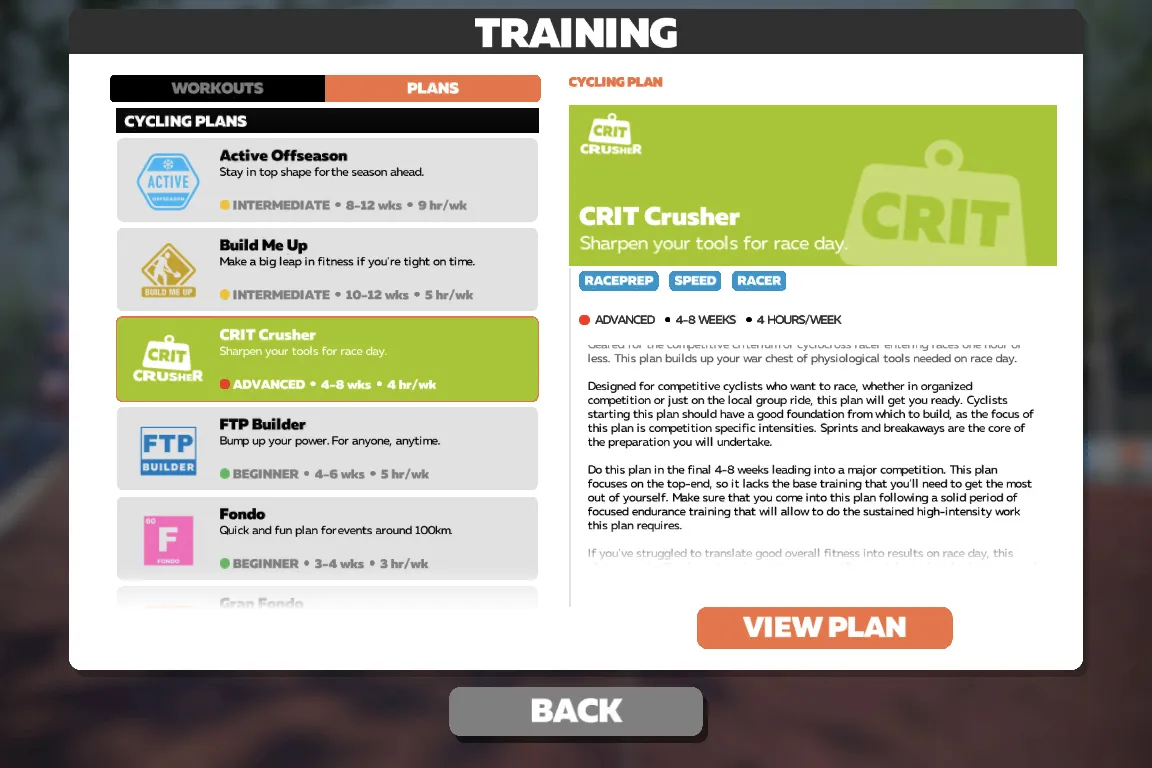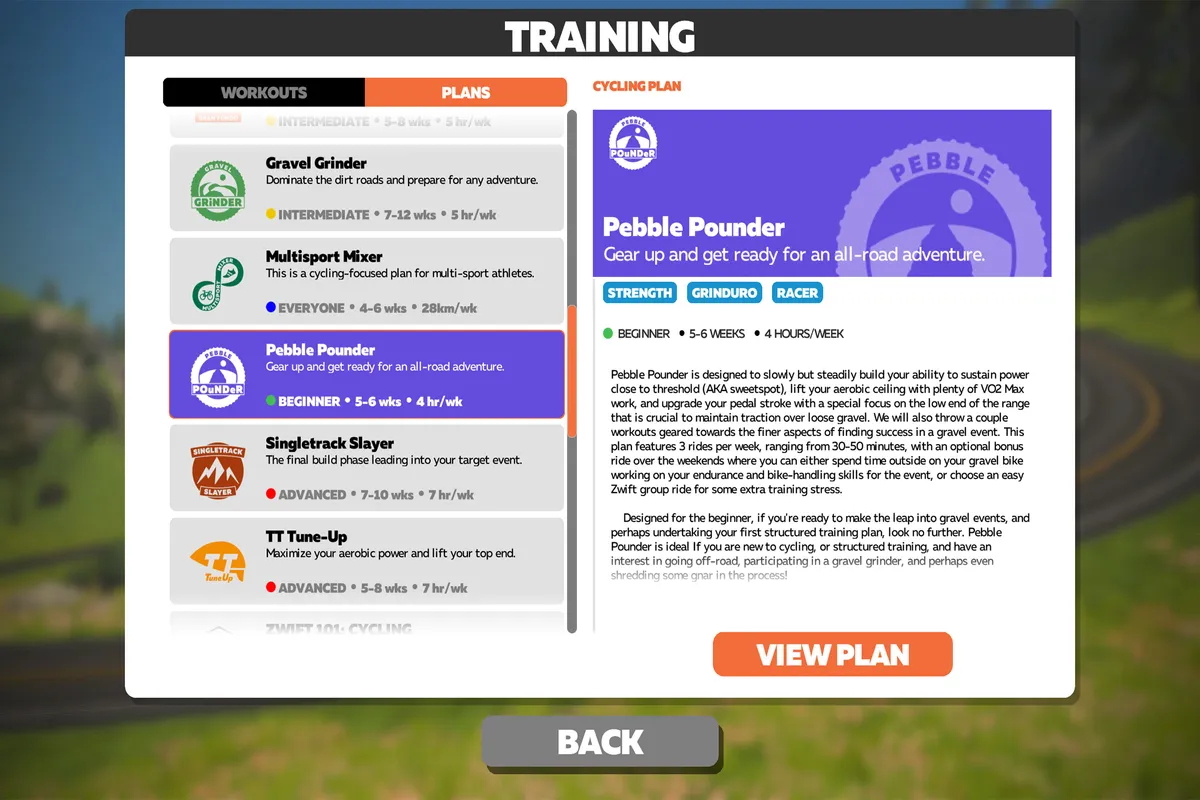It’s that time of year when riders start to plan out their objectives for next season. Maybe you want to ride 100 miles for the first time, take on a legendary gran fondo or sportive such as the Etape du Tour, or set forth on an epic gravel adventure. Or perhaps you’re a road, criterium, mountain bike or time-trial racer looking for an edge in 2021.
Whatever your goal, Zwift can help you achieve it.
The benefits of indoor training have been well documented, but fighting the boredom used to be arguably just as hard as physically completing the intervals.
How to sign up to Zwift
Visit the Zwift website to sign up for a free 7-day trial. After your trial period ends, Zwift costs £12.99 / $14.99 per month.
Fortunately, though, the advent of platforms such as Zwift, where you can ride, train and race in a virtual world with thousands of other people from across the globe, has truly consigned this struggle to history.
You can take on one of Zwift's training plans and ride alone in your own world of pain or, as it’s a hugely social platform, join one of the many group rides (or create your own), races and events that take place on Zwift every day.
To find out what’s happening, head to the Events page on the Zwift Companion app. There you’ll be able to filter by category and event type to find something that suits your own personal needs.
Beyond just being engaging, Zwift can also help make your training extremely time efficient. Matt Rowe, of Rowe & King Cycle Coaching, says: “Your muscles are firing all the time on turbo, compared to on the road where you get lots of small rest periods from cornering and freewheeling."
Rowe even goes as far to say an hour on Zwift is worth roughly an hour-and-a-half on the road, partly thanks to the fact you can complete your planned session to the letter, without any unexpected interruptions.
But how can you best use Zwift to achieve your goals on the bike? Here's how to train for a century ride, sportive, road race, mountain bike race, criterium, gravel event and time trial.
And if you're not using Zwift yet, sign up for a free trial on the Zwift website.
Riding 100 miles

Despite all of the advances in technology, riding 100 miles (161km) is still a massive target for many cyclists because, unless you’re Marcin Bialoblocki (who set a 100-mile time-trial record of 03:13:37 in 2019), it’s going to take you a long time – most mere mortals will be looking at more than six hours in the saddle, at least.
It would be easy to think that training for long rides is all about getting in the base miles, but Rowe says it’s also vital to incorporate shorter, harder sessions into your training, especially if, like many people, you don’t have unlimited free time to train.
“You don’t need to complete 100 miles in training to peak for a 100-mile event, but reducing volume comes with a need to increase intensity,” he says.
Zwift has a wide selection of potent workouts that last less than an hour, so you can get in a decent effort in a short amount of time. Rowe also suggests focusing on sweetspot training because it’s “one of the most time efficient ways to boost your endurance.”
Recommended training plan on Zwift
Consider trying Zwift’s FTP Builder or Build Me Up training plans. These are designed to help you make sizeable gains in your aerobic ability, helping you to ride for longer without fatiguing.
Training for gran fondos and sportives

The key to success in a gran fondo or sportive is often about being able to manage the huge amount of elevation gain across the course. Famous continental events such as the Etape du Tour and Maratona dles Dolomites, for example, both pack in around 4,000m of climbing.
But, if you live somewhere without alpine-like mountain roads (like most parts of the UK), it can be practically impossible to replicate the kind of specific climbing efforts required to excel on that terrain.
However, with Zwift you can take on epic climbs from the comfort of your own home, such as Alpe du Zwift. Taking inspiration from the mythical Tour climb of Alpe d’Huez, it features 21 hairpins along with 1,036m of elevation gain.
Or you could try the Four Horsemen route in Watopia. It’s a 89.3km ride across all the K/QOM segments in Watopia and packs in an elevation gain of 2,112m, making it an ideal way of training for a sportive or gran fondo.
Recommended training plan on Zwift
For riders looking to add structure to their training, Zwift’s Gran Fondo plan is specifically targeted at preparing you for this kind of event.
Rowe says: “Sweetspot training is your friend here, especially [in combination] with threshold efforts at lower cadences – aim for 50 to 60RPM, but be careful with your knees.”
Preparing for a season of road racing

It’s all very well hitting your best numbers when you’re fresh, but road races are generally won in the last hour (or less), so to succeed in this discipline you need to get used to producing big efforts when you’re fatigued, according to Rowe.
To do this, you’ll need to work on your endurance, your capacity to sustain power above threshold and your neuromuscular power (your sprint). You also need to get in plenty of real-world riding and racing to hone your bunch riding skills and tactics.
Most aspiring road racers will know that getting to the final of a road race with something left in the legs is key, but we can’t all train like WorldTour professionals and get in 20 to 30 hours on the bike every week to build a massive engine. Instead, you have to be “smart and specific with the time you have available to train”, says Rowe.
Rowe suggests combining endurance rides in the morning with a Zwift race in the evening, for a great way of training for the tough back end of road races.
“It can be difficult to dig deep enough outside of a competitive environment, so racing on Zwift is a perfect way to incorporate true race-level efforts into your training”, says Rowe.
And while there’s always lots of talk among racers about avoiding junk miles, Rowe says balance is important: "Having fun and riding with your mates at the weekend is always recommended, but it’s possible to realise a far greater training stimulus by doing structured training as opposed to simply going with the flow."
Recommended training plan on Zwift
The FTP Builder plan will give you a solid foundation of fitness to work with, but as Rowe says, you’ll want to enter some Zwift races as well, to ensure you’re getting the right amount of intensity into your training on a regular basis.
Training for mountain bike racing

In mountain bike races or events, “the most difficult off-road sections test your technical and bike handling skills to the max, while also drawing upon your raw strength”, says Rowe.
“A huge strength demand is placed on your leg muscles when navigating your way around rocks and roots at low cadences. This is unlike all other forms of cycling, so you need to train specifically for it,” he says.
That means low cadence and high torque work. Rowe says his “go-to MTB specific workout is blocks of tempo (zone 3) work, interspersed with spikes of 55rpm low cadence intervals”.
Like many other cycling disciplines, having an established base of fitness is vital, but if you’re training for cross-country events then race sharpness will only come from the kind of super-high-intensity efforts that are difficult to replicate when training alone.
Just like with training for criteriums then, taking part in Zwift races – which tend to be short and intense – will help prepare you for the lung-bursting efforts and attacks you’re almost certain to face out on the trails.
Of course, you’ll need to get out on your mountain bike in the real world to practice your technical skills too. After all, it’s no good getting to the top of the climb at the head of the pack, only to get dropped on the technical descent to the finish line.
Recommended training plan on Zwift
The Singletrack Slayer plan is ideal for experienced mountain bikers looking to hone their racing edge ahead of a cross-country MTB race or event. It features lots of high intensity intervals, as well as a focus on pedalling drills and high torque efforts.
If you're not quite ready to tackle such an advanced training plan, Zwift’s Dirt Destroyer training plan is another great mountain bike training plan at the intermediate level.
Getting in peak form for criteriums

Criterium races, or crits, are short road races usually held around a circuit of varying degrees of technicality. There are crits that have short hills, twists and turns or there are crits that are essentially pan flat and involve racing at breakneck speed around an outdoor track.
Whatever the course, crits are all about going full gas from start to finish, so prepare to train for intensity. “You need to get used to going fast”, says Rowe.
As with road racing, a lot of riding and racing experience in real life is vital because bunch positioning, cornering and race tactics are all crucial skills that you need to work on in order to succeed.
Replicating the kind of intensity and repeated efforts required in crits outside on open roads can be challenging, though. Often, you’ll find that road systems and traffic will slow you down and stop you from getting full efforts out safely, so doing the really hard stuff on Zwift makes sense.
Once again, jumping into Zwift races is a great way of training at proper race speeds thanks to the competitive mindset they allow you to tap into.
A new event-only course called Crit City has recently been added to the game. It’s just 1.9km long with 26ft of elevation per lap, but events will almost certainly be ridden all out from start to finish, so be prepared to dig deep.
Outside of race situations, Rowe recommends focusing on speed work with fresh legs: “You want to be hitting your maximum neuromuscular power numbers and stressing your muscular-skeletal system."
Recommended training plan on Zwift
Rowe says criterium training is all about quality, not quantity. The CRIT Crusher plan on Zwift consists of just four hours of training per week on average, for example, but be prepared to spend a lot of that time chewing your handlebars. After all, the harder you train, the easier the race will be.
How to train for a gravel event

Much like sportives and gran fondos, gravel races tend to be long and arduous. Add in the requirement to cover technical, off-road terrain and you’ve got a very tough bike racing discipline indeed.
Think 200km jaunts across the Icelandic wilderness and you’ll begin to understand the demands of gravel events and races, as well as why gravel bikes have become such a specialised niche.
With this in mind, the first thing you’ll need to sort is your ability to ride for a long time at a strong pace. “You need to be fit enough to enjoy yourself, especially during the last hour when the fatigue starts to set in", says Rowe.
“Sweet spot and sub-threshold efforts will help develop your aerobic efficiency”, according to Rowe, helping you to cover the epic distances “without simply staring at your stem and counting down the kilometres.”
On top of that, include some high intensity work too, because this will help prepare you for any steep off-road climbs you encounter.
“Periodisation is key,” says Rowe, “high intensity intervals, whether done in Zwift workouts or races through the winter will help keep you fit and powerful, but the closer you get to your event, the more your training should replicate the demands of it.”
Recommended training plan on Zwift
If you’re new to the world of gravel riding and racing it can seem pretty daunting, but don’t fear, Zwift’s Pebble Pounder training plan is built to steadily lift your aerobic capacity and VO2 max.
It also includes pedalling and cadence work to help with those technical off-road sections. For more experienced riders, the Gravel Grinder plan could be just what you need.
Training for time trials

Contrary to popular opinion, time trialling isn’t simply about staring at the watts and churning out a pure threshold effort for one hour. It’s actually more complicated than you might expect, as Rowe says: “There’s a lot of technique and feel in time trialling. Experience counts for a lot.”
Nevertheless, it is a solo effort against the clock (unless you’re doing a team time-trial, that is), meaning there’s no drafting and tactics count for less, so working on your aerobic engine is a massive component to success in time trials.
There’s more nuance to it than simply riding at Functional Threshold Power all the time, though, because the fastest way to ride most time trials is rarely to just hold a constant power for the entire duration of the race.
It’s critical you can push above threshold and recover quickly, and that you can repeat this until the end of the race. Even nominally flat time trials will almost always be peppered with small rises, downhills and corners, and it will always be faster to distribute your effort tactically over the course, rather than trying to maintain a totally consistent wattage target throughout.
Beyond that, popular events such as 10-mile time trials or short mid-week club events – which most people will finish in under 25 to 30 minutes – require long efforts well above FTP, so you need to train your mind and body to handle that kind of intensity.
Training on Zwift is a perfect way to train for these types of efforts because doing race efforts on the TT bike out on the open roads isn’t always ideal, especially if the roads where you live are busy.
“You know you can complete your planned session to the letter [on Zwift], without any interruptions or unwanted rest”, says Rowe. That means you can focus on being disciplined in the aero position and digging as deep as possible in a safe environment.
Recommended training plan on Zwift
The TT Tune-Up is perfect for seasoned cyclists, but it’s quite a heavy workload so less experienced riders may find it too much.
In that case, the FTP Builder plan might be a better place to start but, either way, Rowe suggests doing “specific efforts on Zwift, particularly in the zones above threshold, while also learning how to ride to feel in time trials out on the road.”
Custom workouts on Zwift

It’s worth noting that Zwift has a powerful in-game tool for creating custom workouts, so if you’ve got a specific session that you know works wonders for you, or if Zwift’s large library of workouts and training plans just aren’t quite what you’re looking for, you can always dive in and build your own workouts in a matter of minutes.
If you’ve got a coach or training plan on Training Peaks or Today’s Plan, you can also import your sessions onto Zwift simply by syncing your accounts on the Connections page (found under More / Settings) of the Zwift Companion app.
You don’t need to be training for a specific event to get the most out of Zwift, though. If you just want to get a bit fitter, take a local K/QOM or smoke your friends at the town sign sprint, Zwift can help you do that, too.
And whether you’re new to the platform or a seasoned virtual pro, don’t forget to check out our Zwift tips to help make your experience as enjoyable as possible.

